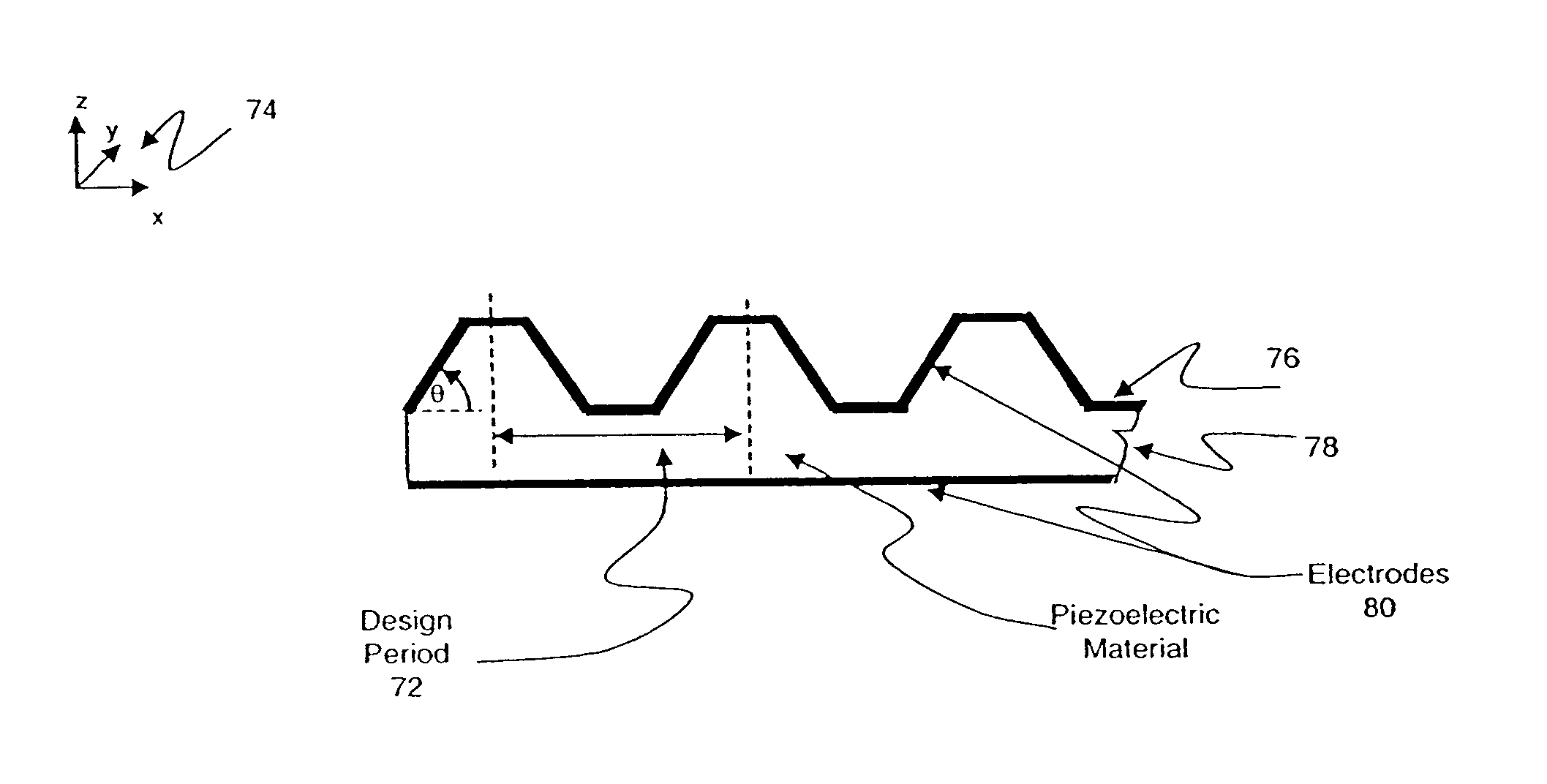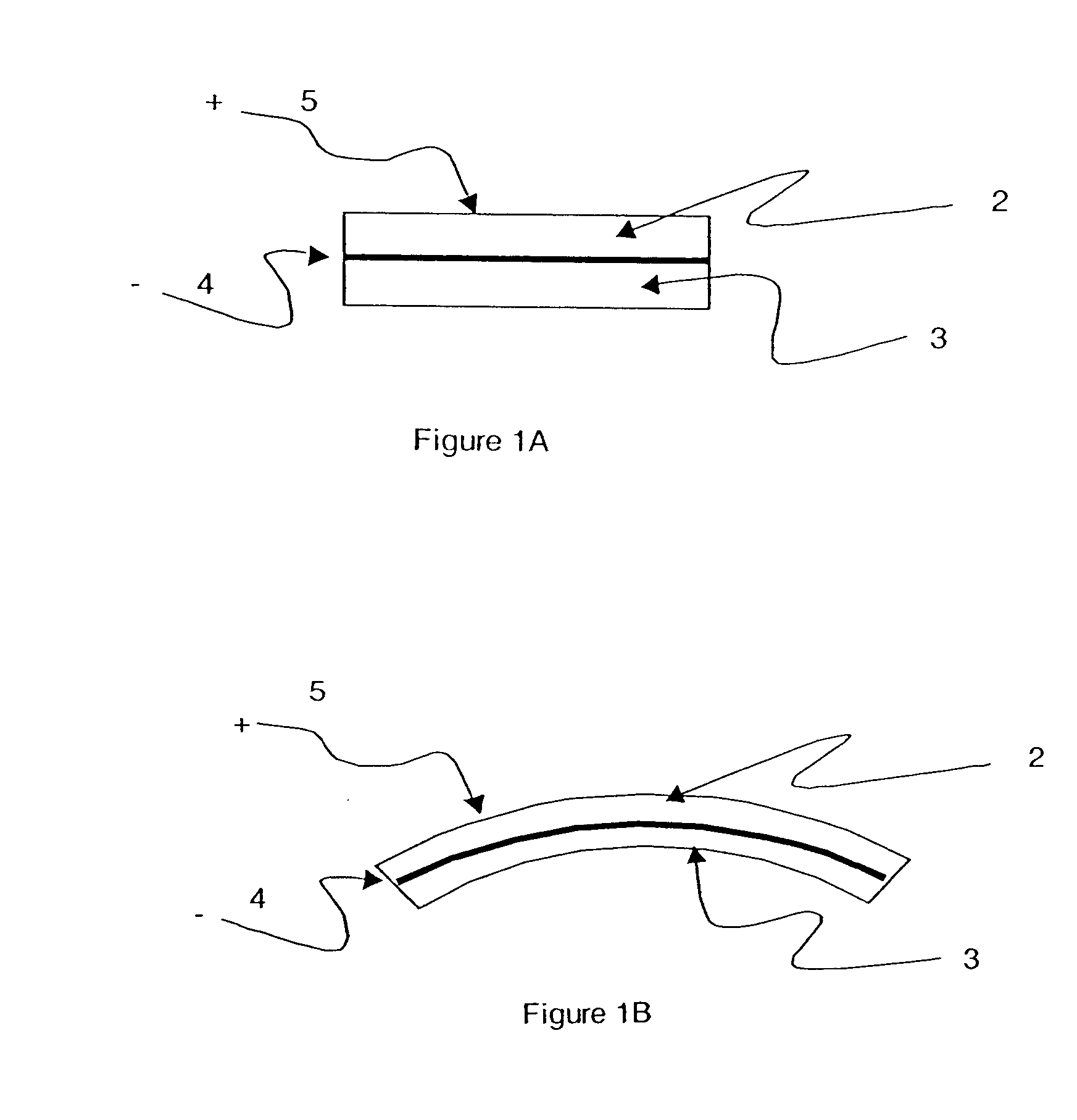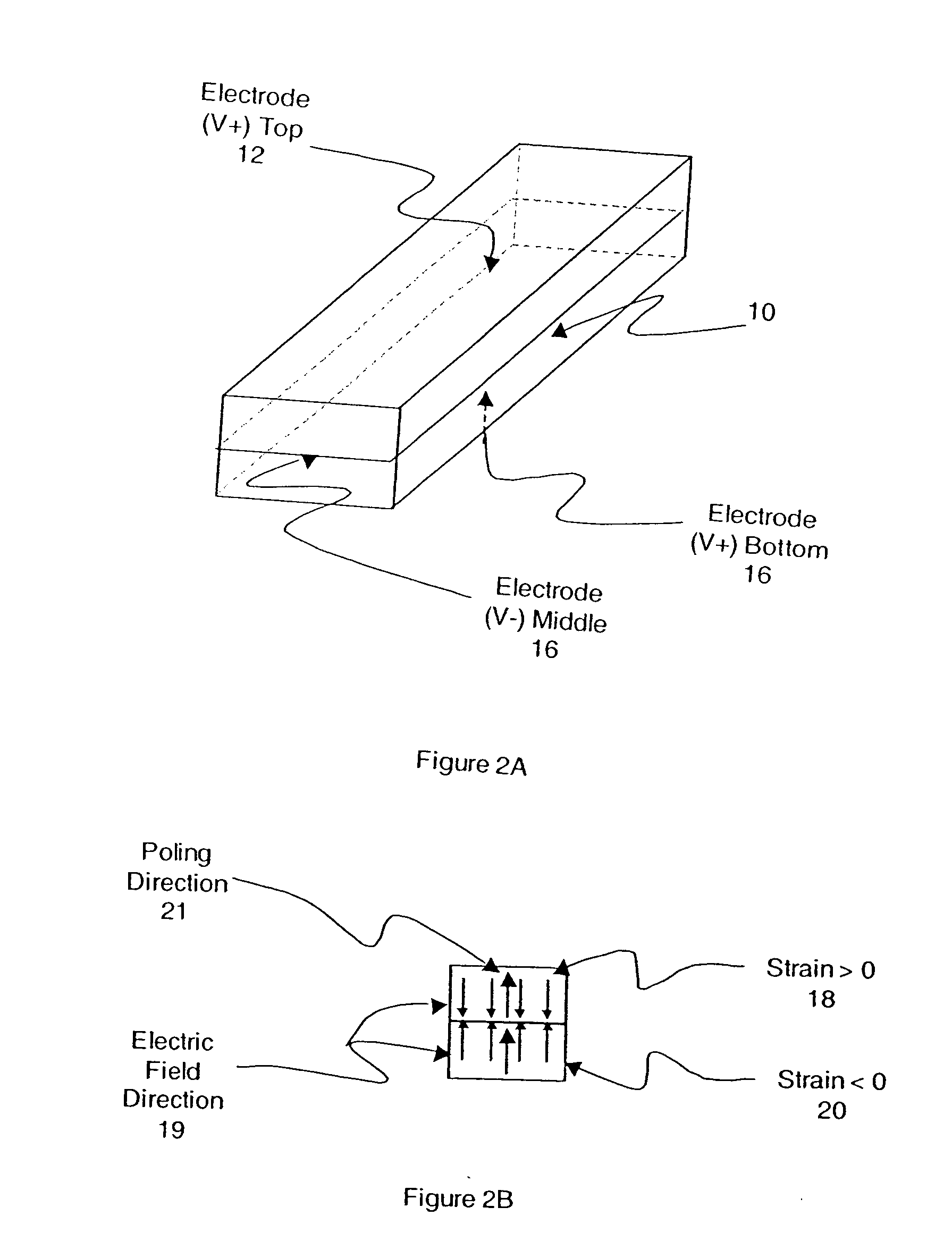Bending actuators and sensors constructed from shaped active materials and methods for making the same
a technology of actuators and active materials, applied in the field of actuators and sensors, can solve the problems of non-restricted morphs, large actuation travel for a given applied field, and non-uniform piezoelectric activity
- Summary
- Abstract
- Description
- Claims
- Application Information
AI Technical Summary
Benefits of technology
Problems solved by technology
Method used
Image
Examples
Embodiment Construction
)
[0072] In describing the preferred embodiment of the present invention, reference will be made herein to FIGS. 1-15 of the drawings in which like numerals refer to like features of the invention.
[0073] The present invention relates to the use of active materials for which the physical properties and electromechanical state functions of the material are responsive to applied energy fields. A shaping of the external topology generates within the material non-uniform fields for the express purpose of exploiting the resulting non-uniform distribution of physical properties or the electromechanical state functions established as a result of the external topology for generating moments and bending the member. In one embodiment, an actuator based on bending is presented. The bending is caused by a non-uniform strain-inducing field generated within a single homogeneous slab of a non-planar geometry and non-uniform thickness. In another embodiment, a sensor is presented through the use of a...
PUM
 Login to View More
Login to View More Abstract
Description
Claims
Application Information
 Login to View More
Login to View More - R&D
- Intellectual Property
- Life Sciences
- Materials
- Tech Scout
- Unparalleled Data Quality
- Higher Quality Content
- 60% Fewer Hallucinations
Browse by: Latest US Patents, China's latest patents, Technical Efficacy Thesaurus, Application Domain, Technology Topic, Popular Technical Reports.
© 2025 PatSnap. All rights reserved.Legal|Privacy policy|Modern Slavery Act Transparency Statement|Sitemap|About US| Contact US: help@patsnap.com



